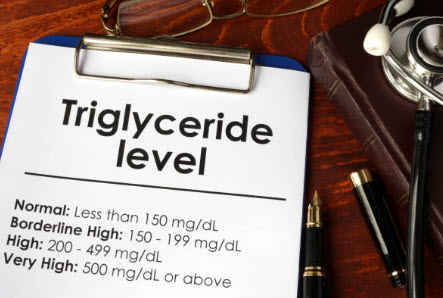Introduction:
Triglycerides and cholesterol are two types of lipids or fats that circulate in the bloodstream. These fats are essential for our body to function properly. However, an abnormal increase in their levels can lead to various health problems, including heart disease and diabetes. Triglycerides and cholesterol are often confused, but they are different in terms of their structure, function, and impact on the body. This article aims to explain the difference between triglycerides and cholesterol, their relationship with diabetes, and how to manage their levels.
What are Triglycerides?
Triglycerides are the most common type of fat in the body. They are made up of three fatty acid molecules and one glycerol molecule. Triglycerides are a source of energy that the body uses for its daily activities. They are also stored in fat cells and released when the body needs energy. Triglycerides are found in many foods, including meat, dairy products, and cooking oils. The liver also produces triglycerides in response to high levels of sugar or carbohydrate intake.
What is Cholesterol?
Cholesterol is a type of fat that is essential for the body to function. It is a component of cell membranes, and it is used to make hormones, vitamin D, and bile acids. Cholesterol is carried in the bloodstream by two types of lipoproteins: low-density lipoprotein (LDL) and high-density lipoprotein (HDL). LDL cholesterol is often referred to as “bad” cholesterol because it can build up in the arteries and cause blockages. HDL cholesterol is known as “good” cholesterol because it helps to remove excess cholesterol from the bloodstream.
How are Triglycerides and Cholesterol Different?
Triglycerides and cholesterol are different in terms of their chemical structure, function, and impact on the body. Triglycerides are made up of three fatty acid molecules and one glycerol molecule, while cholesterol is a single molecule. Triglycerides are a source of energy, while cholesterol is used to make hormones and other important substances in the body. High levels of triglycerides can increase the risk of heart disease and diabetes, while high levels of LDL cholesterol can lead to atherosclerosis, a condition in which the arteries become narrowed and clogged.
Triglycerides and Diabetes:
Triglycerides are closely related to diabetes. High levels of triglycerides are often seen in people with type 2 diabetes, especially those who are overweight or obese. Triglycerides are also associated with insulin resistance, a condition in which the body’s cells become resistant to insulin, a hormone that regulates blood sugar levels. Insulin resistance is a precursor to type 2 diabetes. High levels of triglycerides and low levels of HDL cholesterol are part of a cluster of metabolic abnormalities known as metabolic syndrome, which is a risk factor for diabetes and heart disease.
Cholesterol and Diabetes:
Cholesterol is also linked to diabetes. High levels of LDL cholesterol are associated with an increased risk of heart disease and stroke, which are common complications of diabetes. People with diabetes are more likely to have high levels of LDL cholesterol and low levels of HDL cholesterol, which is known as diabetic dyslipidemia. Diabetes also affects the way the body processes cholesterol, leading to the accumulation of cholesterol in the blood vessels and an increased risk of atherosclerosis.
Managing Triglycerides and Cholesterol:
Managing triglycerides and cholesterol is important for people with diabetes. Lifestyle changes, such as losing weight, increasing physical activity, and eating a healthy diet, can help to lower triglyceride and cholesterol levels. The American Diabetes Association recommends that people with diabetes aim for a total cholesterol level below 200 mg/dL, an LDL cholesterol level below 100 mg/dL, and a triglyceride level below 150 mg/dL.
Dietary changes can be particularly effective in managing triglyceride levels. Reducing intake of high-calorie, high-fat foods and increasing consumption of fruits, vegetables, whole grains, and lean protein sources can help to lower triglycerides. People with diabetes should also limit their intake of alcohol, which can raise triglyceride levels.
Medications can also be used to manage triglycerides and cholesterol. Statins are a class of medications that are used to lower LDL cholesterol levels. Fibrates and niacin are medications that can be used to lower triglycerides. However, medication should always be used in conjunction with lifestyle changes, and it is important to work closely with a healthcare provider to determine the best course of treatment.
Conclusion:
In conclusion, triglycerides and cholesterol are different types of fats that circulate in the bloodstream. High levels of these fats can lead to various health problems, including heart disease and diabetes. Triglycerides are closely related to diabetes, and high levels of triglycerides are often seen in people with type 2 diabetes. Cholesterol is also linked to diabetes, and people with diabetes are more likely to have high levels of LDL cholesterol and low levels of HDL cholesterol. Managing triglycerides and cholesterol is important for people with diabetes, and lifestyle changes, such as a healthy diet and increased physical activity, can be particularly effective. Medications can also be used to manage triglycerides and cholesterol, but should be used in conjunction with lifestyle changes and under the guidance of a healthcare provider.
